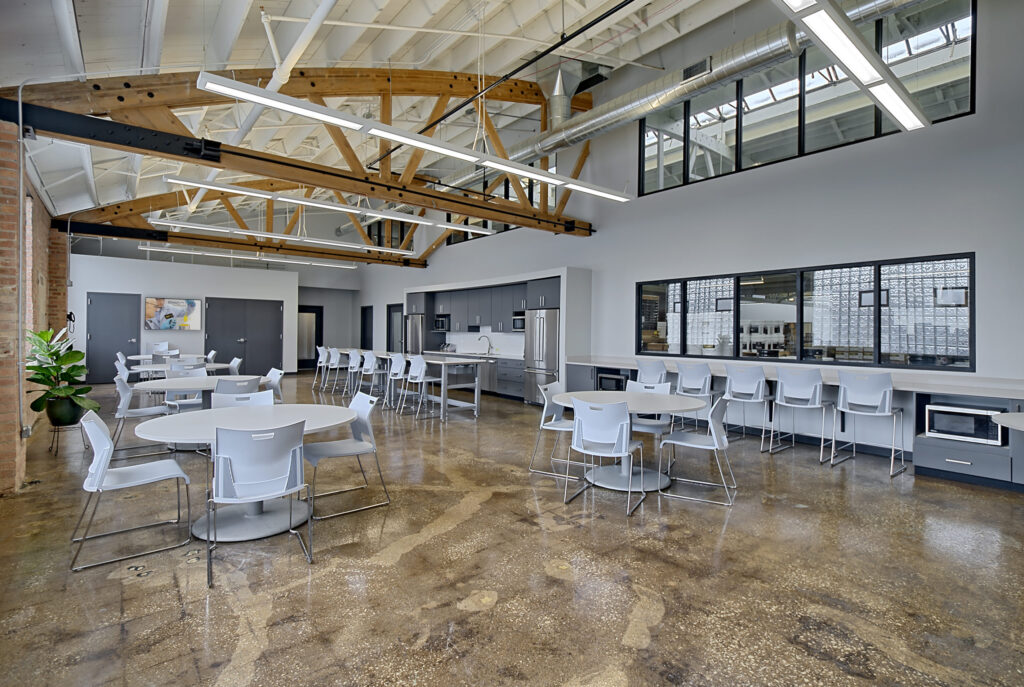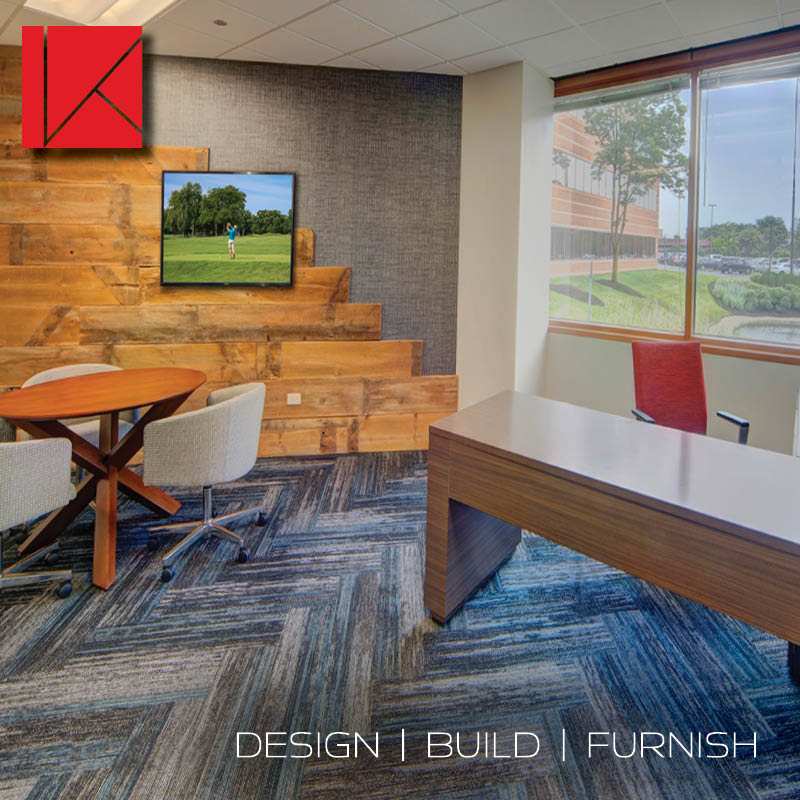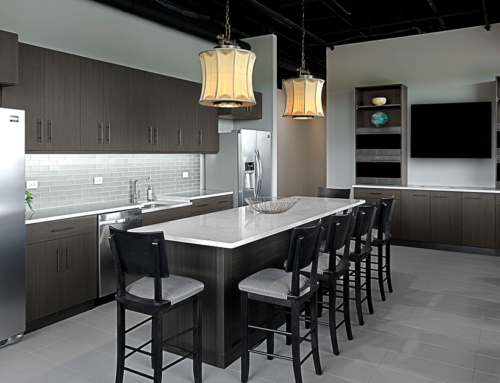Workplace Wellness: 8 Ways to Revitalize Your Office for a More Productive Culture

Workplace wellness isn’t just a trendy topic—it’s a critical element that shapes employee satisfaction, productivity, and the overall cultural vibrancy of an organization. At the heart of this movement is the strategic design of workspaces, highlighting how the office environment affects everything from morale to motivation. As companies navigate the ever-evolving dynamics of work in the 21st century, the role of office decor has grown exponentially, reflecting corporate identity and contributing to employee engagement and success.
Incorporate Biophilic Elements
The term ‘biophilic’ comes from the Greek words for life and love, and it refers to humanity’s innate need to connect with nature. Biophilic design can take various forms in the workplace, from living walls to natural light optimization.
The Nature of Work
Studies have shown that introducing natural elements into office spaces can significantly reduce stress. When employees can glimpse the sky, feel the warmth of natural sunlight, or nurture a small desk plant, their engagement and creativity flourish. Moreover, these additions improve air quality, fostering an environment where body and mind can thrive.
Optimizing for Growth
Biophilic design should be approached holistically, with every individual space contributing to the well-being of its occupants. Considerations should extend to the choice and care of plants, the types and placement of greenery, and how to integrate these elements into existing architectural layouts.
Opt for Neutral Colors
Color psychology is an established field, and it has a profound impact on human emotions and behaviors. When selecting the color scheme for your office, pale, neutral tones are a win-win for tranquility and concentration.
The Power of Shades
Soothing hues like soft blues and gentle greens can evoke a sense of calm and mimic natural environments. These tones can also increase the perception of open space, essential in preventing feelings of constraint or claustrophobia in crowded work areas.
Harmony and Hues
It’s about balance. While neutral colors are superb for the primary environment, they allow pops of more motivating tones in breakout areas or where creative thinking is fostered. Think energizing yellows or optimistic oranges—used strategically, they counterbalance the neutrality without overwhelming.
Provide Comfortable Furniture
Ergonomics is more than a buzzword—it’s a science that can revolutionize the workday. Investing in comfortable office furniture is an investment in the health and productivity of your employees.
Sit Smart
Chairs should provide adequate lumbar support and allow for customization, such as seat and armrest height adjustments. A well-designed ergonomic chair is a frontline defense against the chronic discomfort that can derail productivity.
Standing Strong
The standing desk is another valuable tool for employee wellness. Offering the flexibility to alternate between sitting and standing can prevent the sedentary work habits that often lead to health issues.
Personalize Workspaces
A personalized space is an inviting space, and when employees feel at home in their office environment, they’re more likely to feel a sense of belonging and make more significant contributions.
The Art of Self-Expression
Encourage your team to decorate their spaces with items that hold sentimental value or are aesthetically pleasing. Photos of loved ones, artwork, or even a favorite mug can all create a welcome touch that nurtures a creative or personal space.
A Wall of Fame
Consider implementing a community wall where shared achievements can be displayed, or team members can post their personal bests. This enhances the individual office spaces and contributes to a broader sense of team accomplishment.
Create Relaxation Zones
Designating specific areas for relaxation and stress relief signals that employee well-being is a priority for the company.
Zoning Out
Creating spaces for quiet reflection, meditation, or even just a change of scenery can have immeasurable benefits on productivity. Ensure these areas are comfortably furnished, ideally with soft or supportive seating, and are acoustically separated from active workspaces.
The Garden at Work
For those with a green thumb, an indoor garden can serve as a space for productivity and relaxation. Tending plants and watching them grow can be inherently rewarding and therapeutic.
Reduce Clutter
Few things disrupt a sense of order and calm more than a cluttered environment. Focusing on the organization can lead to greater employee focus and a more peaceful office atmosphere.
The Minimalist Approach
Adopting a minimalist mindset regarding office decor can help ensure that spaces remain conducive to productivity. Choose multi-functional furniture, consider digital alternatives to paperwork, and actively discourage hoarding habits.
Orderly Office, Orderly Mind
Organizational strategies should be tailored to the team’s unique needs and work patterns. Solutions like desk organizers, proper labeling, and routine clean-up times can go a long way in maintaining a tidy and productive workspace.
Incorporate Soft Lighting
Lighting is an integral but often overlooked part of office design. Harsh, fluorescent lights can lead to headaches and eyestrain, two common enemies of productivity.
Bright Ideas
Incorporating natural light is the goal; however, for spaces that can’t be lit this way, mimic nature with soft, ambient lighting. Think of it as giving the office a gentle, indoor glow.
The Art of Illumination
Dimmer switches and shades offer flexibility in controlling light levels throughout the day. Task lighting is also essential, ensuring that employees can illuminate their immediate work area without sacrificing the overall mood of the office.
Integrate Relaxing Artwork
Art is personal, evocative, and can be powerfully calming. A thoughtfully curated collection of artwork can transform the ambiance of an office space, creating an environment that is both reflective and restorative.
Color Your World
When selecting artwork for the office, be mindful of the mood each piece might elicit. Landscapes, abstract patterns, and serene photographs are all excellent choices for creating a welcoming and stress-reducing atmosphere.
Message in the Murals
Consider commissioning murals or large-scale installations that tie into the company’s ethos or tell a story relevant to its mission. Public artwork such as this beautifies the space and serves as a conversation piece and source of inspiration.
Benefits of Relaxing Office Decor
Implementing the strategies provided not only promotes employees’ well-being but also produces many tangible benefits for employers.
A Productivity Windfall
Relaxing office decor reduces workplace stress, thereby increasing focus and productivity. Employees who feel comfortable and content in their work environment are more likely to produce high-quality work consistently.
A Ripple of Well-being
Enhanced well-being leads to happier employees, leading to a healthier company culture. An established culture of wellness can permeate all aspects of the business, from team morale to interdepartmental relationships.
Attraction and Retention
A well-designed office speaks volumes to prospective employees, signaling that this company values its team members. Likewise, it is a significant factor in retaining talent, with employees more likely to stay in an environment that supports their holistic well-being.
A Positive Brand Image
The office is a physical manifestation of a company’s brand, and a tastefully decorated, stress-free space communicates the brand’s values to clients, partners, and visitors. It can differentiate a business as one that cares about its employees and projects a professional and polished image.
In conclusion, the deliberate design of office spaces to enhance wellness and productivity is an investment in the company’s most important asset: its people. Organizations can create a harmonious and effective environment that supports success and growth by recognizing and responding to employee needs for comfort and inspiration. As we continue to reimagine the future of work, let’s ensure that the offices we occupy reflect our commitment to health and happiness and, ultimately, to flourishing business.




